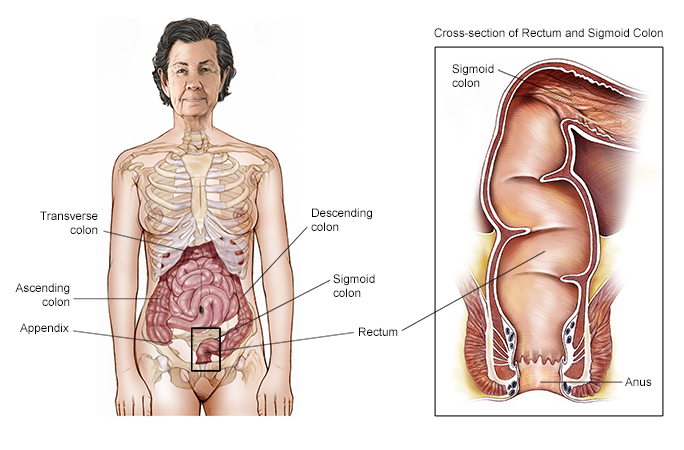Approved by the Cancer.Net Editorial Board, 09/2023
About colorectal cancer
Colorectal cancer begins when healthy cells in the lining of the colon or rectum change and grow out of control, forming a mass called a tumor. A tumor can be cancerous or benign. A cancerous tumor is malignant, meaning it can grow and spread to other parts of the body. A benign tumor means the tumor can grow but will not spread. These changes usually take years to develop. Both genetic and environmental factors can cause the changes. However, when a person has an uncommon inherited syndrome (see Risk Factors and Prevention), changes can occur in months or years.
Anatomy of the colon and rectum
The large intestine is part of the body’s gastrointestinal (GI) tract or digestive system. The colon and rectum make up the large intestine, which plays an important role in the body’s ability to process waste. The colon makes up the first 5 to 6 feet of the large intestine, and the rectum makes up the last 6 inches, ending at the anus.
The colon and rectum have 5 sections. The ascending colon is the portion that extends from a pouch called the cecum to the portion of the colon that is near the liver. The cecum is the beginning of the large intestine into which the small intestine empties; it’s on the right side of the abdomen. The transverse colon crosses the top of the abdomen. The descending colon takes waste down the left side. Finally, the sigmoid colon at the bottom takes waste a few more inches, down to the rectum. Waste leaves the body through the anus.

About colorectal polyps
Colorectal cancer most often begins as a polyp, a noncancerous growth that may develop on the inner wall of the colon or rectum as people get older. If not treated or removed, a polyp can become a potentially life-threatening cancer. Finding and removing precancerous polyps can prevent colorectal cancer.
There are several forms of polyps. Adenomatous polyps, or adenomas, are growths that may become cancerous. They can be found with a colonoscopy (see Risk Factors and Prevention). Polyps are most easily found during a colonoscopy because they usually bulge into the colon, forming a mound on the wall of the colon that can be found by the doctor.
About 10% of colon polyps are flat and hard to find with a colonoscopy unless a dye is used to highlight them. These flat polyps have a high risk of becoming cancerous, regardless of their size.
Hyperplastic polyps may also develop in the colon and rectum. They are not considered precancerous.
Types of colorectal cancer
Colorectal cancer can begin in either the colon or the rectum. Cancer that begins in the colon is called colon cancer. Cancer that begins in the rectum is called rectal cancer.
Most colon and rectal cancers are a type of tumor called adenocarcinoma, which is cancer of the cells that line the inside tissue of the colon and rectum. This section specifically covers adenocarcinoma. Other types of cancer that occur far less often but can begin in the colon or rectum include neuroendocrine tumor of the gastrointestinal tract, gastrointestinal stromal tumor (GIST), small cell carcinoma, and lymphoma.